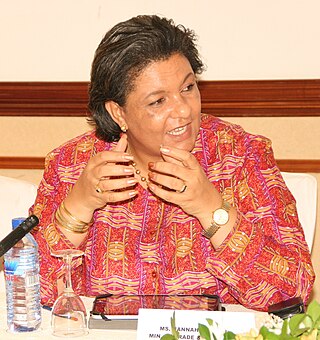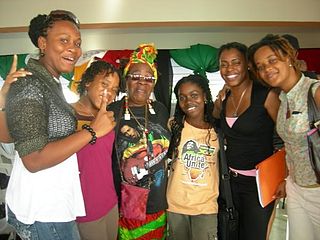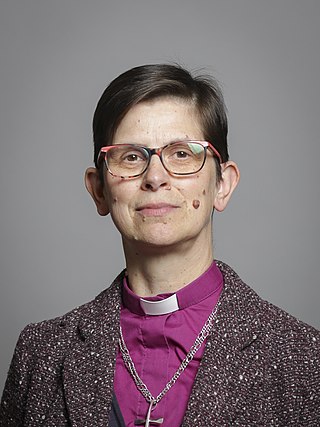Women who live in or are from England.

Women in England are women who live in or are from England.

| Part of a series on |
| Women in society |
|---|
 |
Women in England are women who live in or are from England.
The Women's Liberation Movement (WLM) began as recently as the early 1960s. It began with the introduction of birth control pills. It was only provided to women who were wedded under the law to seek out contraceptive pills. Three years after the proposal, women were given the rights to inherit property. Within that same decade, women were granted the rights to have abortions under the Abortion Act. This was deemed legal as long as the pregnancy did not pass the 24th week mark. [1]
In 1970, the call to conference of the Women's Liberation Movement was held to raise awareness. The four main concerns addressed were equal pay between genders, providing fair education and job opportunities for women, coverage of abortion and contraception, and availability of 24-hour nurseries – free of charge. [2]
From there on, a chain reaction of reformation within the United Kingdom emerged. Rape Crisis centers were created, Women's Aid was formed, the Sex Discrimination Act was signed, domestic violence was called out, and conferences were held more than ever to protect women. [1] These movements were the stepping-stone used to scaffold the modern day era of England's feminine culture.
The School Workforce found that females are leading in the education field. Women make up most of the faculty within a classroom and as headteachers. [3] Women's are more likely to go to university and to obtain a bachelor or post graduate degree than men. [4]
| | This section needs expansion. You can help by adding to it. (December 2016) |
Traditionally, the Anglican priesthood was reserved for men. [5] In 2014, the Church of England appointed the first woman bishop, Libby Lane. [6] [7]

Women's rights are the rights and entitlements claimed for women and girls worldwide. They formed the basis for the women's rights movement in the 19th century and the feminist movements during the 20th and 21st centuries. In some countries, these rights are institutionalized or supported by law, local custom, and behavior, whereas in others, they are ignored and suppressed. They differ from broader notions of human rights through claims of an inherent historical and traditional bias against the exercise of rights by women and girls, in favor of men and boys.
The men's rights movement (MRM) is a branch of the men's movement. The MRM in particular consists of a variety of groups and individuals who focus on general social issues and specific government services which they say adversely impact, or in some cases, structurally discriminate against, men and boys. Common topics discussed within the men's rights movement include family law, reproduction, suicides, domestic violence against men, false accusations of rape, circumcision, education, conscription, social safety nets, and health policies. The men's rights movement branched off from the men's liberation movement in the early 1970s, with both groups comprising a part of the larger men's movement.

Women in Cuba have the same constitutional rights as men in the economic, political, cultural and social fields, as well as in the family. Cuba is regarded as a regional front-runner in women's rights. According to Article 44 of the Cuban Constitution, "The state guarantees women the same opportunities and possibilities as men in order to achieve woman’s full participation in the development of the country." As of 2015, women hold 48.9% of the parliamentary seats in the Cuban National Assembly ranking sixth of 162 countries on issues of female participation in political life.
The history of feminism comprises the narratives of the movements and ideologies which have aimed at equal rights for women. While feminists around the world have differed in causes, goals, and intentions depending on time, culture, and country, most Western feminist historians assert that all movements that work to obtain women's rights should be considered feminist movements, even when they did not apply the term to themselves. Some other historians limit the term "feminist" to the modern feminist movement and its progeny, and use the label "protofeminist" to describe earlier movements.
In the United Kingdom, as in other countries, feminism seeks to establish political, social, and economic equality for women. The history of feminism in Britain dates to the very beginnings of feminism itself, as many of the earliest feminist writers and activists—such as Mary Wollstonecraft, Barbara Bodichon, and Lydia Becker—were British.
The women's liberation movement (WLM) was a political alignment of women and feminist intellectualism. It emerged in the late 1960s and continued into the 1980s, primarily in the industrialized nations of the Western world, which effected great change throughout the world. The WLM branch of radical feminism, based in contemporary philosophy, comprised women of racially and culturally diverse backgrounds who proposed that economic, psychological, and social freedom were necessary for women to progress from being second-class citizens in their societies.
Antifeminism, also spelled anti-feminism, is opposition to feminism. In the late 19th century and early 20th century, antifeminists opposed particular policy proposals for women's rights, such as the right to vote, educational opportunities, property rights, and access to birth control. In the mid and late 20th century, antifeminists often opposed the abortion-rights movement.

Feminism in Japan began with women's rights movements that date back to antiquity. The movement started to gain momentum after Western thinking was brought into Japan during the Meiji Restoration in 1868. Japanese feminism differs from Western feminism in that less emphasis is placed on individual autonomy.
"Double Jeopardy: To Be Black and Female" is a 1969 feminist pamphlet written by Frances M. Beal that critiques capitalism, reproductive rights, as well as social politicalization and its effects on the black women identity and community. Beal's essay talks about the misconceptions and troubles that occur when trying to analyze the role of a black woman in society. The pamphlet covers many different aspects of life and the levels of oppression placed upon black women in the areas of capitalism, race, and gender. Additionally, the pamphlet includes principles outlined by the Third World Women's Alliance (TWWA).
During the 1960s, the United States underwent a sexual revolution. The revolution was a social and cultural movement that resulted in liberalized attitudes toward sex and morality. Social norms were changing as sex became more widely discussed in society. Erotic media, such as films, magazines, and books, became more popular and gained widespread attention nationally. Sex was entering the public domain.

The status of women in Ghana and their roles in Ghanaian society has changed over the past few decades. There has been a slow increase in the political participation of Ghanaian women throughout history. Women are given equal rights under the Constitution of Ghana, yet disparities in education, employment, and health for women remain prevalent. Additionally, women have much less access to resources than men in Ghana do. Ghanaian women in rural and urban areas face slightly different challenges. Throughout Ghana, female-headed households are increasing.
Shortly after feminist ideology started gaining popularity in the mid-19th and early 20th century in the United Kingdom of Great Britain and Ireland and the United States, and slowly the rest of the world, the movement begun affecting changes to the social and political life of Greece. In 1952, Greek women gained the right to vote. However, other changes did not come until a few decades later, as with, for example, the introduction of sweeping changes in family law in 1983. Greece signed the Convention on the Elimination of All Forms of Discrimination against Women and ratified it in 1983.
The feminist movement has affected change in Western society, including women's suffrage; greater access to education; more equitable pay with men; the right to initiate divorce proceedings; the right of women to make individual decisions regarding pregnancy ; and the right to own property.

Women in Paraguay face challenges to their rights. Faced by socioeconomic inequalities and gender pay gap, they experienced significant cultural changes since 1990 as a result of constitutional and legal expansions of women's rights and evolving cultural attitudes. The legal and government institutions currently existing in Paraguay were developed in part through the efforts of feminist organizations in the country that held significant awareness-raising campaigns during the 1990s to formalize the guarantees of women's rights. UN Women supports the Paraguayan State in the challenge to extend women's rights, to fight for gender equality, as well as women's empowerment. It also ensures that women's voices are heard and create more opportunities for women.

Women's societal roles in Brazil have been heavily impacted by the patriarchal traditions of Iberian culture, which holds women subordinate to men in familial and community relationships. The Iberian Peninsula, which is made up of Spain, Portugal and Andorra, has traditionally been the cultural and military frontier between Christianity and Islam, developing a strong tradition for military conquest and male dominance. Patriarchal traditions were readily transferred from the Iberian Peninsula to Latin America through the encomienda system that fostered economic dependence among women and indigenous peoples in Brazil. As the largest Roman Catholic nation in the world, religion has also had a significant impact on the perception of women in Brazil, though over the past century the Brazilian government has increasingly broken with the Catholic Church in regard to issues related to reproductive rights.

Women in Trinidad and Tobago are women who were born in, who live in, or are from Trinidad and Tobago. Depending from which island the women came, they may also be called Trinidadian women or Tobagonian women respectively. Women in Trinidad and Tobago excel in various industries and occupations, including micro-enterprise owners, "lawyers, judges, politicians, civil servants, journalists, and calypsonians." Women still dominate the fields of "domestic service, sales, and some light manufacturing."

The feminist movement, also known as the women's movement, refers to a series of social movements and political campaigns for radical and liberal reforms on women's issues created by inequality between men and women. Such issues are women's liberation, reproductive rights, domestic violence, maternity leave, equal pay, women's suffrage, sexual harassment, and sexual violence. The movement's priorities have expanded since its beginning in the 1800s, and vary among nations and communities. Priorities range from opposition to female genital mutilation in one country, to opposition to the glass ceiling in another.

Elizabeth Jane Holden Lane is a British Anglican bishop and Lord Spiritual. Since February 2019, she has served as Bishop of Derby in the Church of England, the diocesan bishop of the Diocese of Derby. From January 2015 to 2019, she was the Bishop of Stockport, a suffragan bishop in the Diocese of Chester. She was the first woman to be appointed as a bishop by the Church of England, after its general synod voted in July 2014 to allow women to become bishops. Her consecration took place on 26 January 2015 at York Minster.

History of women in the United Kingdom covers the social, cultural, legal and political roles of women in Britain over the last 500 years and more.
This is a Timeline of second-wave feminism, from its beginning in the mid-twentieth century, to the start of Third-wave feminism in the early 1990s.